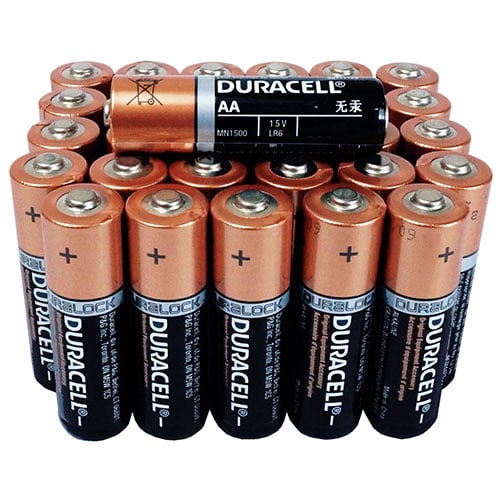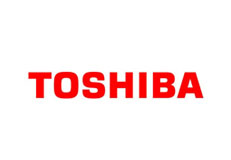Primary battery options: a look at alkaline batteries
The convenience and savings of being able to use rechargeable batteries more than once can lead us to conclude that primary single-use batteries are a waste of money. But this is not the case. Apart from specific applications and the everyday needs that they suitably cater to, the ability of primary batteries to be used instantly after long storage is among their unique benefits.

Alkaline batteries were invented in 1949 by Lewis Urry, a chemical engineer at the Eveready Battery Company, and have been with us since the 1950s. They are the most widely recognized among primary batteries and served as the next step in off-the-shelf consumer batteries, gradually replacing the cheaper 1.5-volt zinc-carbon that powered most consumer devices at its peak. Alkaline batteries deliver more energy at higher loads than their zinc-carbon predecessors and are considerably less susceptible to electrolyte leaks from spent batteries. Leaks are caused by the production of hydrogen gas all primary batteries produce as they discharge. In the absence of adequate venting, pressure builds that ruptures the battery seal creating a corrosive crystalline formation that can spread even into the host device and cause damage.
In common with other primary cells, alkaline batteries have higher specific energy, hold higher capacities, and deliver nearly 40 percent more energy than newer rechargeable technologies such as the lithium-ion batteries. While impressive in published technical specifications, however, manufacturers often do not mention specific power, or power delivery, which is different from specific energy. Primary batteries are inferior to rechargeable batteries when it comes to specific power, particularly for loads that draw high current. Their lack of strength on loading makes alkaline batteries more suitable for light loads of lower drain applications such as remotes, flashlights, and other portable electronics. Where alkaline batteries fail to address the requirement for high capacity devices, lithium-metal batteries offer improved loading.
Alkaline and other primary batteries exhibit low performance under high load conditions due to their high internal resistance, which is how well electrical current flows through a material, as measured in ohms (Ω). As the battery is discharged, its internal resistance continues to increase, which causes a collapse in voltage. Demonstrating the performance of an alkaline battery in low drain devices as opposed to high drain devices, a depleted alkaline from a digital camera will frequently contain enough energy to power a wall clock for as long as two years.
The Ragone chart, named after American metallurgist David V. Ragone, best shows the relationship between battery energy storage levels and power delivery. Runtime depends on the available energy storage capacity of a battery, measured in ampere-hours (Ah). Power governs the load current and is measured in watts. Based upon the chart, to deliver the highest power and performance at high loads, the rechargeable nickel metal hydride (Ni-MH) battery is the best option. Its tradeoff is having the lowest specific energy. To have the highest specific energy and satisfy moderate loading conditions, use primary lithium-iron cells (Li-FeS2). Where a cost-effective solution is desired for lower current drains, alkaline batteries are the logical choice.
The most common cell formats for primary batteries are AA, or penlight batteries, which were made available for the public in 1915; and AAA which appeared 39 years later to address the needs of camera manufacturers and the rise of smaller devices. Other size formats include the larger C, D, and 9-volt batteries. The 1990s saw the introduction of AAAA (pronounced quadruple A) batteries, originally designed to power laser pointers and other micro-format devices. The AAAA battery owes its origin to the 9-volt battery, which consists of six AAAA cells, each with a rated voltage of 1.5V. Other common formats include various disc-shaped, button cells such as the popular LR44 battery.
The alkaline AAA battery has only about half the capacity of an AA, despite their similar selling prices. To illustrate, a bicycle light powered by an AAA battery will provide half the runtime of the equivalent light outfitted with an AA battery for insignificantly little more. Prevailing consumer trends prioritizing downsizing over energy cost contributed to the disparity between their pricing in relation to their capacities. In their drive to cut their costs, cities will often buy alkaline batteries in bulk and consolidate their purchase orders. Where alkaline coin batteries are needed, such as the LR41 or the LR43 battery, some resort to switching to bulk lithium battery purchase orders.
The table below displays some of the battery types available in AA and AAA sizes, and their general specifications:
| Characteristic | Primary (disposable) | Secondary (rechargeable) | |||
| Chemistry | Zinc Carbon | Alkaline | Lithium-ion | Ni-CD | Ni-MH |
| Capacity AA | 400–1700 | 1,800–2,600 | 2,500–3,400 | 600–1,000 | 800–2,700 |
| Capacity AAA | ~300 | 800–1,200 | 1,200 | 300–500 | 600–1,250 |
| Nominal Voltage | 1.50V | 1.50V | 1.50V | 1.20V | 1.20V |
| Discharge rate | Very low | Low | Medium | Very high | High |
| Shelf life | 1–2 years | 7–10 years | 10–15 years | 5 years | 5 years |
As the retail price of the AA battery varies, so does its performance. A battery capacity study conducted by US based engineering firm, Exponent Inc, revealed a wide performance discrepancy of 800 percent among eight brand name AA batteries tested. The basis of the test was the maximum number of digital camera shots taken before each brand’s batteries were spent.
When it comes to our environment, unlike primary lithium batteries which are designated as Class 9 hazardous material, the excellent safety record of alkaline batteries allows for unregulated transport on aircraft. Transport and shipping of lithium batteries are subject to stringent regulatory guidelines. In relative terms, alkaline batteries are considered environmentally friendly, especially when it comes to their disposal. Their reduced long-term environmental damages offset their quantified disposal when compared to the less-frequently discarded but more toxic rechargeable batteries
With today’s availability of battery options and advanced technologies, it is important to keep in mind that they all have their pros and cons. Each battery chemistry provides varying levels of performance dependent upon its host application’s energy requirement. Factors such as cost, safety, and storage should also be considered. As much as the current focus is on rechargeable batteries, augmented media-driven attention to growing lithium technologies, alkaline batteries continue to survive as the most readily available battery chemistry commonly used to power our numerous low drain devices.
We can summarize the benefits of alkaline batteries as follows:
- High specific energy (i.e., capacity)
- Affordability and low cost to manufacture
- Safe disposal due to environmental friendliness
- Leak-proof on full discharge
- Long storage life of up to 10 years
Learn more about battery types in our post, Battery categories and chemistries: an easy 20-minute primer. For more about other primary batteries check out:
Primary battery options: a look at lithium batteries










